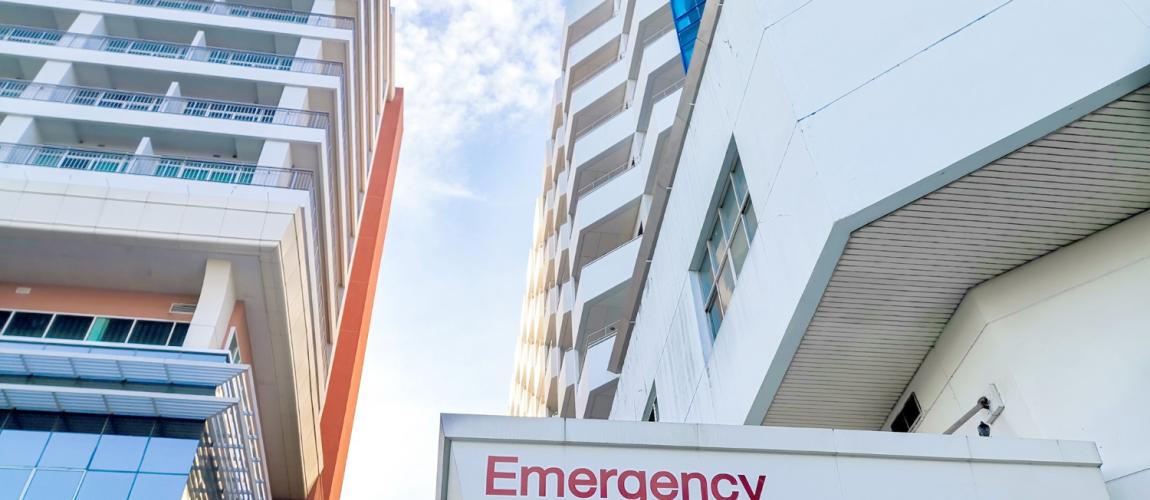Majadahonda’s Puerta de Hierro Hospital, Madrid, Spain

Photo Credit: Image by Freepik
On this page: A case study on Majadahonda’s Puerta de Hierro Hospital, Madrid, Spain. Find more at the Municipal Public-Private Partnership Framework - Project Summaries section for brief summaries of around 100 projects from around the world, examples of successes and challenges, as well as innovative ideas on solutions, or visit the Guidelines on Innovative Revenues for Infrastructure section.
Project Summary: Background The Puerta de Hierro Hospital, constructed in the 1960’s, was nearing obsolescence, while Madrid’s population had been increasing exponentially in the intervening decades. Accordingly, the new Hospital of Majadahonda was included in the Sanitary Infrastructure Plan 2004-2007. However, Madrid’s budget restrictions forced the municipality to look for alternative ways to finance the project, ultimately deciding on a PPP as the preferred option. The choice of a PPP was based not only on the need for private financing, but also the desire to leverage the expertise and experience of Spanish contractors and their management capacity for non-clinical services. Project Structure A two-stage competitive bidding process was launched In December 2004 and, in March 2005, the concession was awarded to a consortium formed by ACS, Dragados, Bovis Lend Lease and SUFI. The consortium later established a special purpose vehicle called Hospital of Majadahonda S.A. to enter into the concession agreement with Madrid. The time from the announcement of the bidding process to contract award spanned less than 6 months. Financial close was achieved in February 2006 and, in July 2007, the new hospital commenced operations. The project entailed designing, building, financing, operating, and maintaining a 172,000 m2 hospital with capacity for 700 beds, 20 operating rooms, and 70 urgent attention points, at an estimated investment cost of EUR 242 million. The contract’s scope included the hospital construction, provision of equipment and furnishing, and operation and maintenance of the facilities. This included making the facility suitable for use through the provision of non-clinical services, such as cleaning, security, restaurant management, laundry, waste management, and transportation. In addition, the contract provided for the commercial exploitation of authorized complementary zones and commercial areas, such as shops, cafeterias, parking lots, vending machines, and commercial stands, which would also generate additional revenues for the private partner. No medical services would be provided by the project company. Hospital operation and maintenance was contracted out to another company created by the consortium shareholders, called Sociedad Hospital Majadahonda Explotaciones, S.L. Financing was provided through an equity contribution of EUR 27 million and a syndicated loan of EUR 222.6 million (senior debt carrying a 27- year tenor) from the following financial institutions: Dexia Sabadell, ING, Ahorro Corporación Financiera, Santander Bank, Sabadell Bank, Banesto, Espiritu Santo Investment, La Caixa, MCC and RBS. The debt leverage of the project was 90/100. Key to obtaining the high financial leverage and long-term tenor was the absence of ‘white coat’ risk (i.e. provision health and sanitary services) and the good standing and name of the project sponsors. In addition, the operating risks had been fully transferred to the operating company, such that the payment deduction risks would be completely absorbed by it. The concessionaire assumed the following risks and responsibilities: permitting and licensing, construction, furniture acquisition and maintenance, facility maintenance and non-medical/sanitary exploitation, and service provision at the agreed level of service. The public partner was responsible of transferring the land to the private partner for construction, making regular payments for use of the facility, and re-establishing the economic equilibrium of the contract should the circumstances require. The project’s revenue sources include commercial revenues generated through the exploitation of the commercial areas and the monthly availability payments paid by Madrid, which consist of a variable and a fixed amount. These payments can suffer deductions in the event of service level breaches, based on either facility availability or quality factors. Lessons Learned The project was not delivered on time, although a review of the publicly available reports on the project did not reveal the reason for the delay. Today, the hospital is functioning as planned and the project has been reported to be a success from the relevant stakeholders.1 The reported reasons for its success include: the clear social and economic need for the hospital; the construction phase was not complex, though the operation phase presents more management challenges; the government payments were only tied to the inflation rate; and the sponsors were seasoned experts in the field with high financial liquidity and technical experience. Footnote 1: Case source: http:// www.cca.org.mx/ ps/funcionarios/ muniapp/descargas/ Documentos_de_ apoyo/experiencias_ internacionales/ Experiencia_espana/ capitulo_6_2.pdf https://piappem.org/file. php?id=224 Accessed on August 15, 2019.
The Guidelines on Innovative Revenues for Infrastructure (IRI) is intended to be a living document and will be reviewed at regular intervals. They have not been prepared with any specific transaction in mind and are meant to serve only as general guidance. It is therefore critical that the Guidelines be reviewed and adapted for specific transactions.
To find more, visit the Innovative Revenues for Infrastructure section and the Content Outline, or Download the Full Report. For feedback on the content of this section of the website or suggestions for links or materials that could be included, please contact the Public-Private Partnership Resource Center at ppp@worldbank.org.
Updated:
TABLE OF CONTENTS
I. Innovative Revenues for Infrastructure (IRI)
2. Introduction to Commercial Value Capture (CVC)
3. Applying CVC in Infrastructure Projects
2. Case Studies in CVC from International Experiences
Related Content
Select WBG PPP Toolkits
Featured Section Links
Additional Resources
Climate-Smart PPPs
Type of ResourceFinance Structures for PPP
Type of ResourceFinancing and Risk Mitigation
Type of Resource